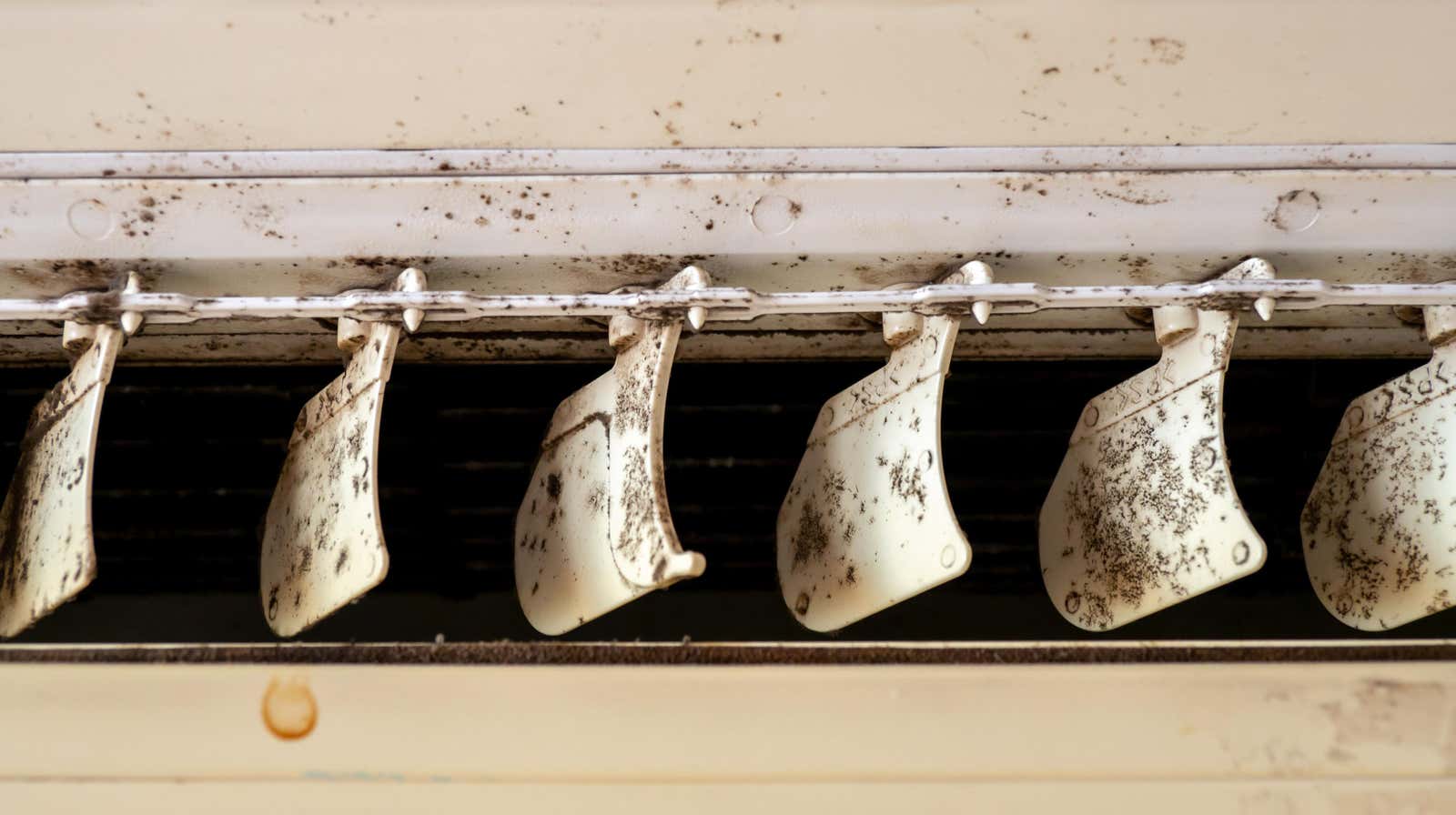How to Know If Your Air Conditioner Has Mold (and What to Do About It)

Air conditioners make life much easier in hot weather. But if your air conditioner is poorly maintained or doesn’t work properly, or hasn’t been used for a long period of time, it can be the perfect environment for mold to grow .
And since mold can cause or exacerbate a variety of health problems , you don’t want it anywhere in your home, especially an appliance that expels air. Here’s how to know if your air conditioner has mold, and if so, what to do about it.
Signs Your Air Conditioner Might Have Mold
If there is no visible mold on the outside of your air conditioner (as in the image above), it’s not always easy to tell if there is. Often the first thing people notice is a musty smell that is only present when the air conditioner is turned on.
Another potential sign is that someone in your family is experiencing new or worsening respiratory symptoms such as coughing, wheezing or shortness of breath, or more frequent headaches or sore throats. (Although this is not such a clear sign given that there are several different reasons why these symptoms may start or worsen.)
How to know if there is mold in the air conditioner
Before any inspection, which may include mold, it’s a good idea to put on a face mask first so you don’t inhale it.
Mold on or inside your air conditioner can be black, brown, green, white, pink, yellow, or orange. It can also show up as black dust that has accumulated around the vents.
Even if mold is not visible from the outside of the air conditioner, it can grow inside it. Here’s how to check it:
Window, wall or freestanding units
Disconnect the AC unit, then remove the front or rear grille to access the filter. Remove the filter and look for stains (especially brown, black, and greenish fluffy) or white or greyish powder (this is mold). If you can’t see anything, use a flashlight to inspect the interior for signs of mold and mildew.
Central air conditioners
Do not try to disassemble anything yourself. Instead, shine a flashlight inside the unit and inspect the fan, air ducts, and vents for any signs of mold and mildew described above. And be sure to check the entire external AC unit, including any bottlenecks near your home.
What to do if you find mold in your air conditioner
According to the US Environmental Protection Agency (EPA), the first thing to do if you notice (or suspect) mold in your air conditioner is to stop using it. This means that the window unit must be turned off, or if you have an air conditioning system, do not turn on your HVAC system. This is because continued use of a contaminated air conditioner can lead to the spread of mold throughout the home, the EPA explains.
If your window, wall, or freestanding unit has a significant amount of mold, unfortunately, it’s safest to get rid of it. But if the mold or fungus seems to be confined to the filter, and that’s not too bad, you can either replace the filter or try to clean it . Here’s how to do it:
First, put on your mask, gloves, and goggles (if you haven’t already) and remove the filter. Then use a soft-bristled brush (which you don’t mind throwing away afterwards) to remove debris and visible mold from the filter. Then mix a solution of one part bleach with 10 parts water, completely submerge the filter in it, and let it soak for at least 10 minutes. Then rinse the filter with clean water and let it air dry.
If you find mold or mildew on your central air conditioning unit, it’s time to call in the professionals – it’s not something you can handle on your own.